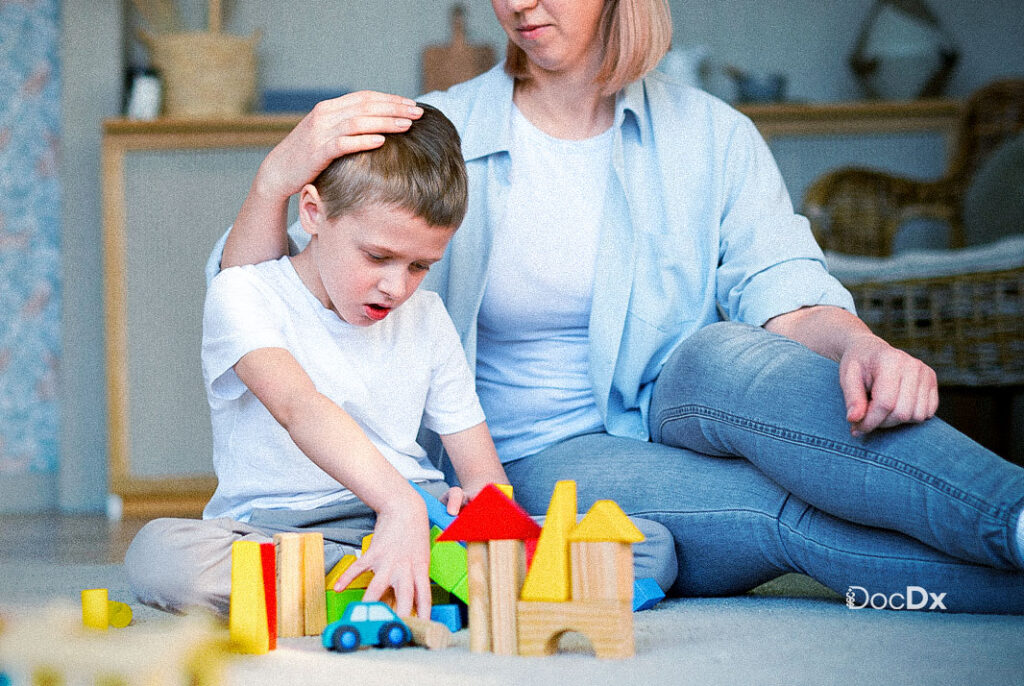Living with ADD/ADHD is very challenging not just for the individual but for their entire family. Specially with managing the emotional ups and downs, finding the right routines, or seeking external support, families play a crucial role in helping a loved one thrive with this condition. In this blog, we’ll explore practical tips for families living with ADD/ADHD, from understanding symptoms to creating effective support systems.
Understanding ADD/ADHD in the Family Context
Before diving into tips, it’s essential to understand that ADD/ADHD doesn’t just affect the person diagnosed with it; it impacts everyone in the household. The symptoms—such as inattention, impulsivity, and hyperactivity—can create stress, miscommunication, and frustration among family members. However, with the right strategies, these challenges can be managed effectively.
1. Educate Yourself About ADD/ADHD
Knowledge is power. One of the best ways families can support a member with ADD/ADHD is by learning about the condition. Understanding the common symptoms, triggers, and treatment options can foster empathy and patience. A great place to start is by exploring online resources, such as the ADD/ADHD Test, which helps determine if a family member might have ADD/ADHD.
2. Build a Consistent Routine
Creating structure is key for individuals with ADD/ADHD, as they often struggle with time management and staying on task. Families can help by establishing daily routines that are predictable and easy to follow. This might involve setting specific times for meals, homework, chores, and bedtime. Consistency can make a significant difference in helping your loved one feel grounded and focused.
3. Break Tasks Into Manageable Steps
People with ADD/ADHD often feel overwhelmed when presented with large tasks or projects. To make things easier, break tasks down into smaller, manageable steps. For example, if it’s homework time, break the work into 15- to 20-minute intervals with short breaks in between. Using to-do lists or visual schedules can also help keep things organized and less daunting.
4. Encourage Open Communication
It’s important for families to have open, honest communication about how ADD/ADHD affects daily life. Encourage all family members to express their feelings—both frustrations and successes. A supportive dialogue can help everyone understand the emotional landscape of living with ADD/ADHD. Regular family meetings can also provide a platform to discuss what’s working and what needs adjusting.
5. Seek Professional Support When Necessary
Managing ADD/ADHD often requires more than just home strategies. Seeking professional help can be a vital step in ensuring your loved one receives the best care. Consulting a primary care provider who specializes in ADD/ADHD is crucial. For families looking for guidance, reading resources like “How to Choose the Right Primary Care Provider” can help in selecting the right healthcare professional for ongoing support.
6. Create a Quiet, Distraction-Free Space
Setting up a quiet space for homework, reading, or relaxation can significantly help someone with ADD/ADHD stay focused. This area should be free from distractions like loud noises, phones, or TV. Simple additions like noise-canceling headphones, fidget tools, or a clear desk can make this space even more conducive to concentration.
7. Focus on Positive Reinforcement
Celebrating small victories can go a long way in boosting the confidence of someone with ADD/ADHD. Instead of focusing on mistakes, praise effort and progress, no matter how small. Positive reinforcement helps build self-esteem and encourages continued efforts in managing symptoms.
8. Set Realistic Expectations
Understanding that ADD/ADHD can bring certain limitations is crucial in maintaining a positive family dynamic. Setting realistic goals and expectations—both for the individual with ADD/ADHD and the family as a whole—can prevent unnecessary frustration. Understand that setbacks will happen, but they should be seen as learning experiences rather than failures.
9. Involve the Whole Family in Support
Everyone in the family should understand that managing ADD/ADHD is a collective effort. Parents, siblings, and extended family members can all play a role in creating a supportive environment. This could involve helping with homework, providing emotional support, or simply being patient during challenging moments.
10. Stay Active and Healthy
Physical activity is not only good for overall health but can also help with ADD/ADHD symptoms. Encourage your family member to engage in regular physical exercise, whether it’s a sport, outdoor activities, or even simple exercises like yoga. Additionally, maintaining a balanced diet rich in nutrients is crucial for brain health and managing symptoms.
11. Encourage Breaks and Downtime
While structure is essential, so is downtime. Over-scheduling or pushing too hard can lead to burnout for both the individual with ADD/ADHD and their family. Ensure that there’s time in the day for relaxation, hobbies, or just enjoying quiet moments. Regular breaks can prevent frustration and help reset focus for the next task.
12. Use Technology as a Tool, Not a Distraction
While technology can often be a source of distraction for people with ADD/ADHD, it can also be used as an effective tool. Apps for time management, organization, and focus—such as digital calendars or reminders—can help manage daily tasks. The key is to use technology to enhance productivity, not take away from it.
13. Collaborate With Schools and Educators
For children and teens with ADD/ADHD, collaborating with teachers and school staff is critical. Setting up Individualized Education Plans (IEPs) or 504 Plans ensures that students receive the accommodations they need to thrive in the classroom. Regular communication between parents and educators will help address any academic or behavioral concerns early on.
14. Address Emotional Health
Living with ADD/ADHD can sometimes lead to emotional challenges, such as low self-esteem or anxiety. It’s important for families to provide emotional support and, if necessary, seek out therapy or counseling. A mental health professional can guide coping strategies that benefit both the individual and the family.
15. Utilize Available Resources
Finally, make sure to utilize external resources that can provide guidance and support. Whether it’s online tools, local support groups, or consultations with healthcare providers, these resources are invaluable. If you’re unsure where to begin, consider starting with a primary care service that offers comprehensive care for ADD/ADHD.
Conclusion
Living with ADD/ADHD as a family requires patience, empathy, and the right strategies. By educating yourselves, creating structure, and seeking support when needed, you can foster an environment where your loved one can thrive. Remember that every family’s journey with ADD/ADHD is unique, but with a collaborative effort, challenges can be transformed into opportunities for growth.




